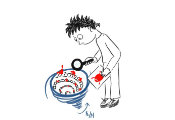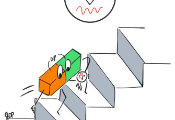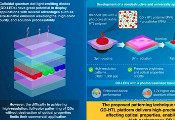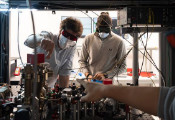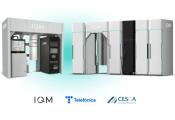LHC Experiments at CERN Observe Quantum Entanglement at the Highest Energy Yet
Geneva, September 18, 2024 -- Entanglement has remained largely unexplored at the high energies accessible at particle colliders such as the Large Hadron Collider (LHC). In an article published today in Nature, the ATLAS collaboration reports how it succeeded in observing quantum entanglement at the LHC for the first time, between fundamental particles called top quarks and at the highest energies yet. First reported by ATLAS in September 2023 and since confirmed by two observations made by the CMS collaboration, this result has opened up a new perspective on the complex world of quantum physics.
"While particle physics is deeply rooted in quantum mechanics, the observation of quantum entanglement in a new particle system and at much higher energy than previously possible is remarkable,” says ATLAS spokesperson Andreas Hoecker. “It paves the way for new investigations into this fascinating phenomenon, opening up a rich menu of exploration as our data samples continue to grow."
The ATLAS and CMS teams observed quantum entanglement between a top quark and its antimatter counterpart. The observations are based on a recently proposed method to use pairs of top quarks produced at the LHC as a new system to study entanglement.
The top quark is the heaviest known fundamental particle. It normally decays into other particles before it has time to combine with other quarks, transferring its spin and other quantum traits to its decay particles. Physicists observe and use these decay products to infer the top quark’s spin orientation.
To observe entanglement between top quarks, the ATLAS and CMS collaborations selected pairs of top quarks from data from proton–proton collisions that took place at an energy of 13 teraelectronvolts during the second run of the LHC, between 2015 and 2018. In particular, they looked for pairs in which the two quarks are simultaneously produced with low particle momentum relative to each other. This is where the spins of the two quarks are expected to be strongly entangled.
The existence and degree of spin entanglement can be inferred from the angle between the directions in which the electrically charged decay products of the two quarks are emitted. By measuring these angular separations and correcting for experimental effects that could alter the measured values, the ATLAS and CMS teams each observed spin entanglement between top quarks with a statistical significance larger than five standard deviations.
In its second study, the CMS collaboration also looked for pairs of top quarks in which the two quarks are simultaneously produced with high momentum relative to each other. In this domain, for a large fraction of top quark pairs, the relative positions and times of the two top quark decays are predicted to be such that classical exchange of information by particles traveling at no more than the speed of light is excluded, and CMS observed spin entanglement between top quarks also in this case.
“With measurements of entanglement and other quantum concepts in a new particle system and at an energy range beyond what was previously accessible, we can test the Standard Model of particle physics in new ways and look for signs of new physics that may lie beyond it,” says CMS spokesperson Patricia McBride.

